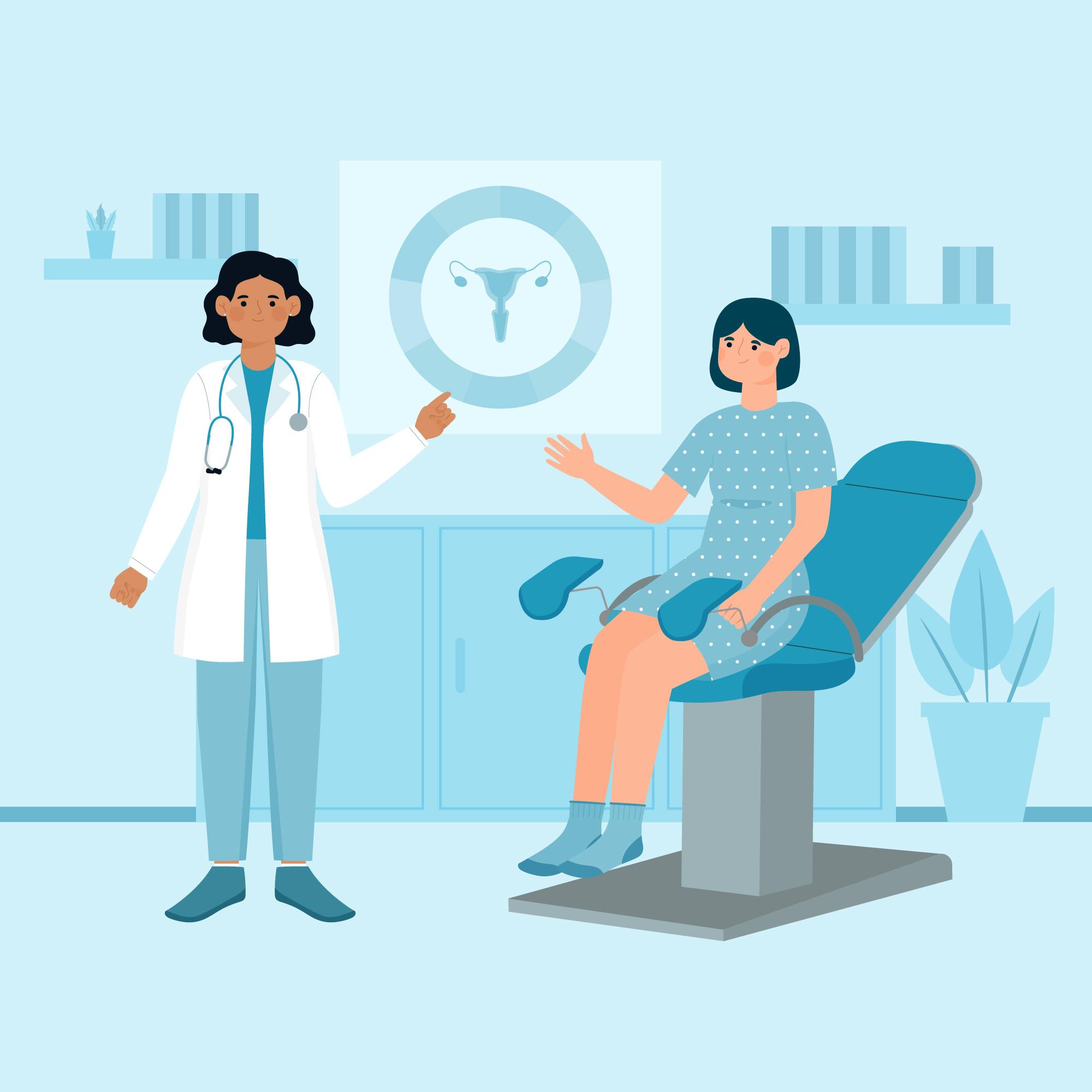Cervical cancer screening is a critical preventive measure aimed at detecting abnormal cells in the cervix that could develop into cancer. The primary purpose of these screenings is to identify changes early, enabling timely treatment and increasing the chances of successful outcomes. Early detection is crucial, as it significantly improves the likelihood of treating cervical cancer effectively.
Types of Cervical Cancer Screening Tests
Pap Smear
- What it is: The Pap smear, or Pap test, involves collecting cells from the cervix to identify any precancerous or cancerous changes.
- How it is performed: During a pelvic exam, a healthcare provider uses a small brush or spatula to collect cells from the cervix gently.
- What results mean: Normal results indicate no abnormal cells were found. Abnormal results require further testing to determine the presence and severity of any abnormalities.lll
HPV Test
- What it is: The HPV test detects the presence of high-risk types of human papillomavirus (HPV) that can lead to cervical cancer.
- How it is performed: Similar to the Pap smear, cells are collected from the cervix and tested for HPV DNA.
- What results mean: A positive result indicates an HPV infection, which may necessitate additional monitoring or testing to prevent the development of cervical cancer.
Who Should Get Screened?
Age recommendations:
- Women aged 21 to 65 should undergo regular cervical cancer screening.
- Screening typically begins at age 21 with Pap smears every three years.
Frequency of screening:
- Women aged 30 to 65 can opt for Pap smears every three years, HPV testing every five years, or a combination of both every five years.
Risk factors necessitating more frequent screening:
- Women with a history of cervical cancer or pre-cancerous lesions
- Women with HIV infection, a weakened immune system, or DES exposure before birth
Preparing for a Cervical Cancer Screening Test
Pre-test guidelines:
- Avoid intercourse, douching, or using vaginal medications for 48 hours before the test.
- Schedule the test when you are not menstruating.
What to expect during the test:
- The test is typically quick and may cause mild discomfort but should not be painful.
- A healthcare provider will explain the procedure and answer any questions you may have.
Post-test care and follow-up:
- Follow any instructions provided by your healthcare provider.
- Await your results and schedule any necessary follow-up appointments.
Understanding Your Test Results
Normal results:
- Indicate no abnormal cells were detected. Continue regular screenings as recommended.
Abnormal results and what they mean:
- May indicate the presence of abnormal cells that require further evaluation.
- A follow-up colposcopy or biopsy may be recommended to examine abnormal areas more closely.
Follow-up procedures for abnormal results:
- Additional tests or treatments may be needed depending on the severity of the abnormalities.
The Role of Cervical Cancer Screening in Prevention
Cervical cancer screening is a powerful tool in preventing cervical cancer. Regular screening detects abnormal cells early, preventing them from developing into cancer. Statistics show a significant reduction in cervical cancer cases in populations with regular screening programs.Addressing Common Concerns and Myths
Common fears about screening:
- Some women fear the test will be painful or embarrassing. However, the procedure is generally quick and well-tolerated.
Debunking myths related to cervical cancer screening:
- Myth: "If I feel fine, I don't need a screening." Fact: Cervical cancer often has no symptoms in its early stages, making regular screenings vital.
Resources and Support for Patients
Where to get screened:
- Local health departments, clinics, and hospitals offer cervical cancer screening services.
References:
- Cervical cancer screening [Internet]. [cited 2024 Jul 18]. Available from: https://medlineplus.gov/cervicalcancerscreening.html
- Harsha Kumar H, Tanya S. A study on knowledge and screening for cervical cancer among women in mangalore city. Ann Med Health Sci Res [Internet]. 2014 [cited 2024 Jul 18];4(5):751–6. Available from: https://www.ncbi.nlm.nih.gov/pmc/articles/PMC4199169/
- Cervical cancer screening - nci [Internet]. 2022 [cited 2024 Jul 18]. Available from: https://www.cancer.gov/types/cervical/screening

